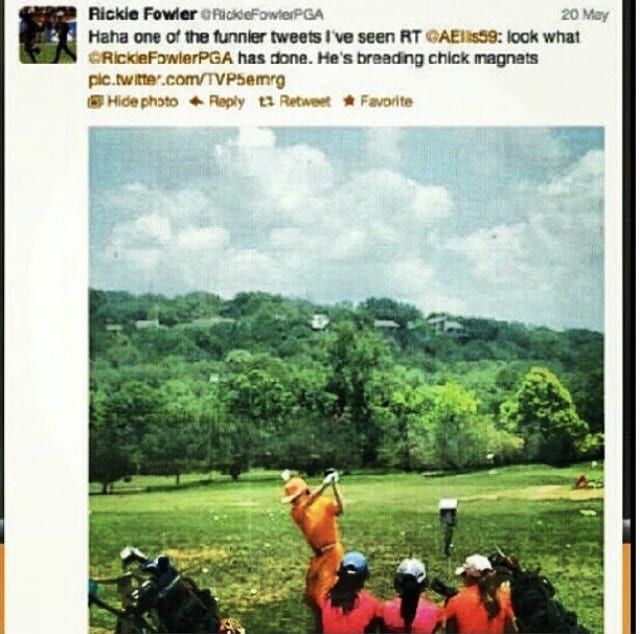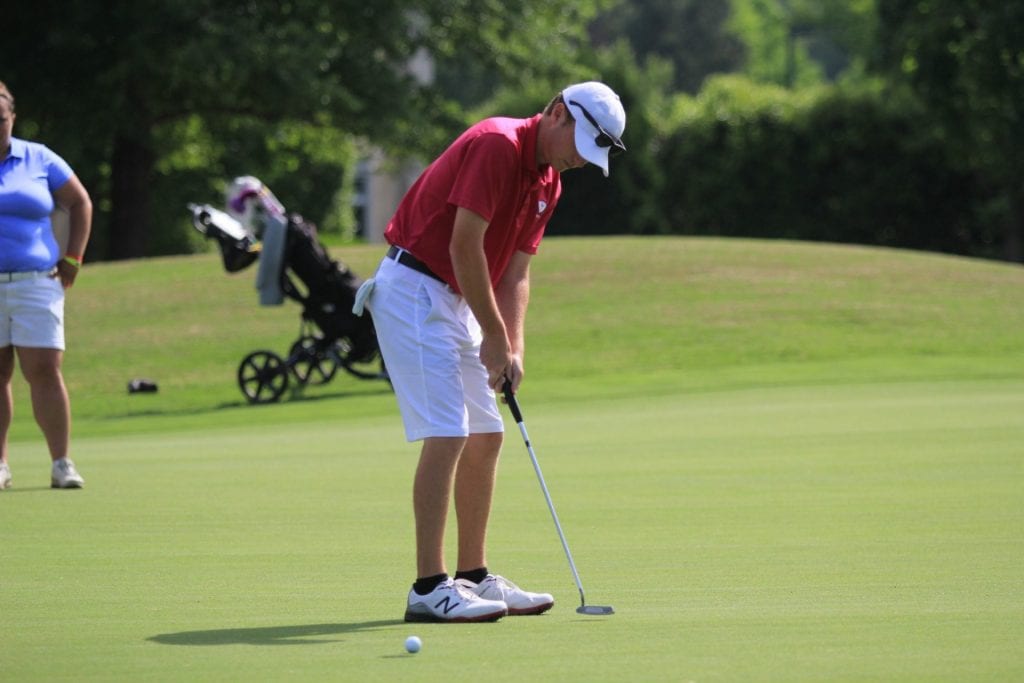By: JOHN PEYTON POU
@ johnpeyton
AUSTIN— Attending Westlake High School, home to one of the top golf programs in the U.S., he worried that because of the steep competition and his exclusion from the top 5, he would be overlooked by college recruiters. But, steep competition and a 2 month long illness can’t stop the drive and commitment of young seasoned golfer, Ryan McGinley.
Austin Native and St. Edward’s University finance major Ryan McGinley has been mastering the art of balancing academics with rigorous golf training since the 8th grade. Finding inspiration through the individual and team aspects of golf, McGinley has uses this sport as a foundational support as he navigates his way though numerous tournaments, teams, and universities.
Above:McGinley working out his putt.
McGinley’ says that his father, Patrick, co-owner of local real estate agency McGinley Group, got him interested in sports at a young age. “My dad played lacrosse at TCU, so I did that when I was younger, but stopped in the 8th grade when I saw golf as a more financially stable future” McGinley said.
After graduating from Westlake in 2016, McGinley found himself at Concordia University, the private university of liberal arts and sciences in northwest Austin. Here, he was able to make a name for himself in the golf world under the mentorship of coach Chris Hill. In his first collegiate tournament he shot 13 under par, ranking as number 1 in the country for his first semester of college.
As McGinley gained momentum in balancing his studies with golf, things came to a standstill when he became ill with Mono in the spring of 2017. Having to take two months off from perfecting his craft on the course, McGinley shares that “it was really difficult not being able to get out there everyday like I was used to, but I still had a decent finish for the year.” Logan Young, a Concordia teammate said that he was inspired as he watch McGinley gain his strength back and jump right back into the competition.
In the fall of 2018, McGinley transferred to St. Edward’s University in his junior year to continue his finance major studies. At the same time, Coach Hill was offered a position as head golf coach at the St. Edward’s. “I’ve really enjoyed watching Ryan grow in a multitude of ways, but especially in what he brings to the golf course” said Hill.
“We spend almost 30 hours a week on the golf course, definitely more time than we spend in class,” said St. Ed’s team mate Will Arend.
Off of the course, McGinley enjoys playing football and basketball with his friends and keeping up with fantasy football “all day every day.”While McGinley strives to become a professional golfer, his backup plan is to become a golf coach or use his expected finance degree to get involved in his parents real estate business or investment banking.
 Professional golfer Rickie Fowler, one of McGinley’s idols, retweeted a photo of McGinley taking a swing in Fowler’s signature orange golf shirt.
Professional golfer Rickie Fowler, one of McGinley’s idols, retweeted a photo of McGinley taking a swing in Fowler’s signature orange golf shirt.


